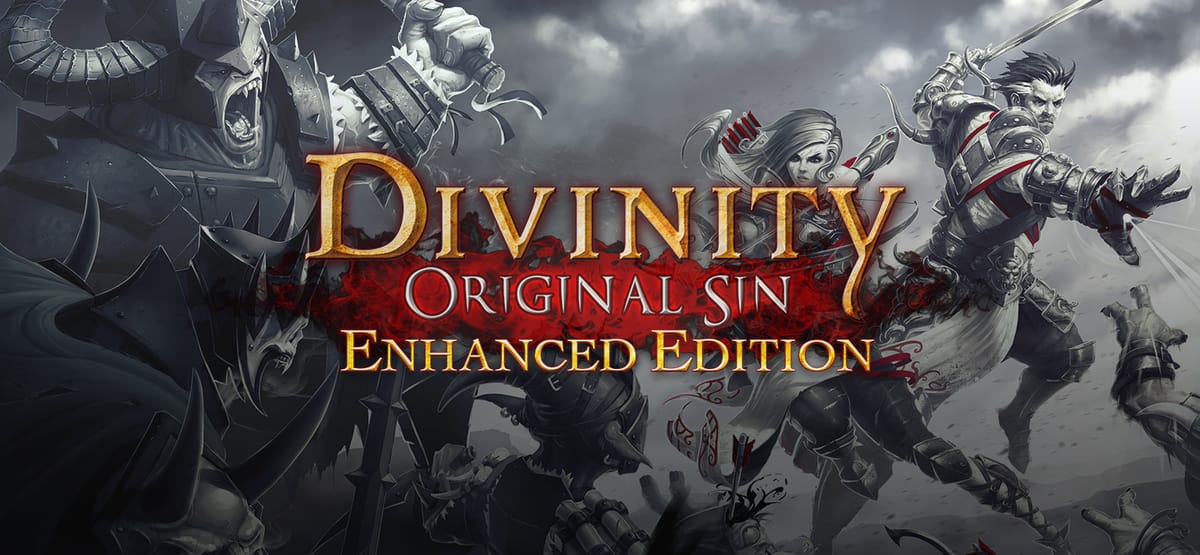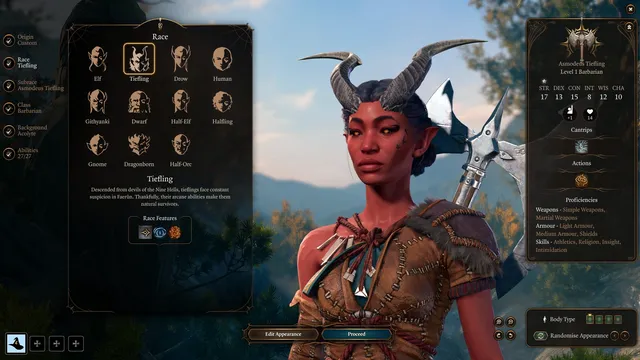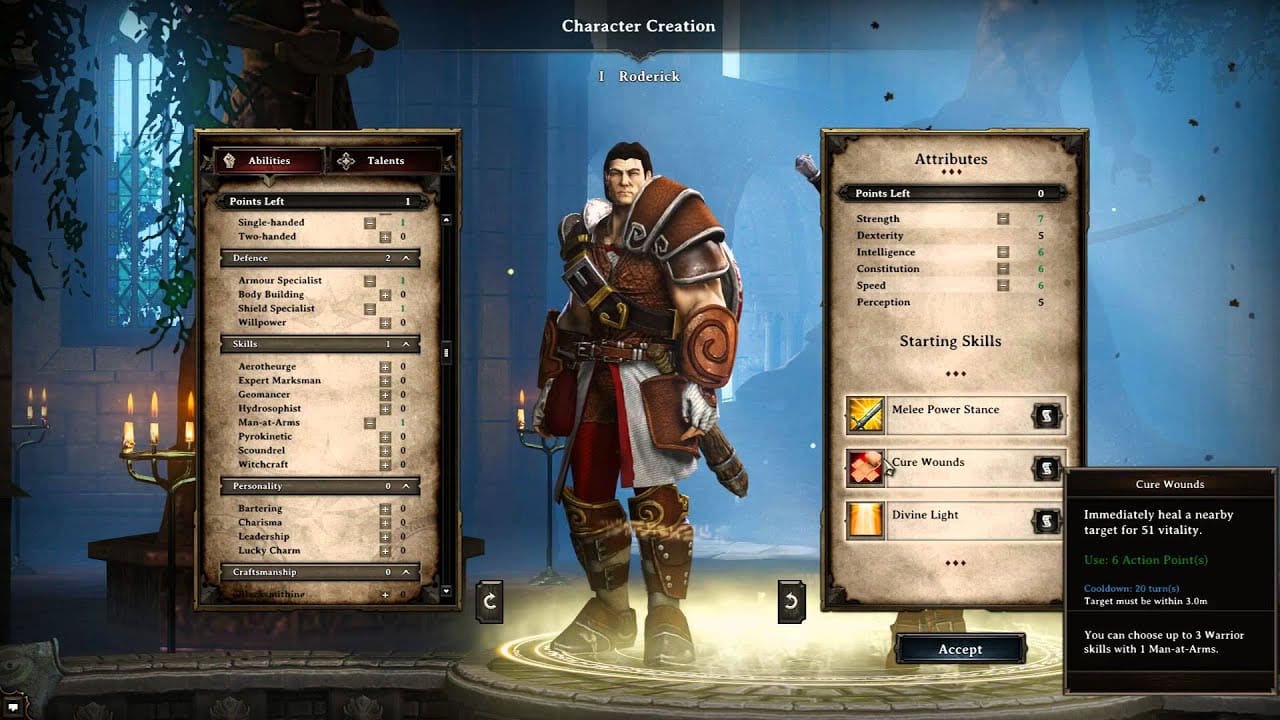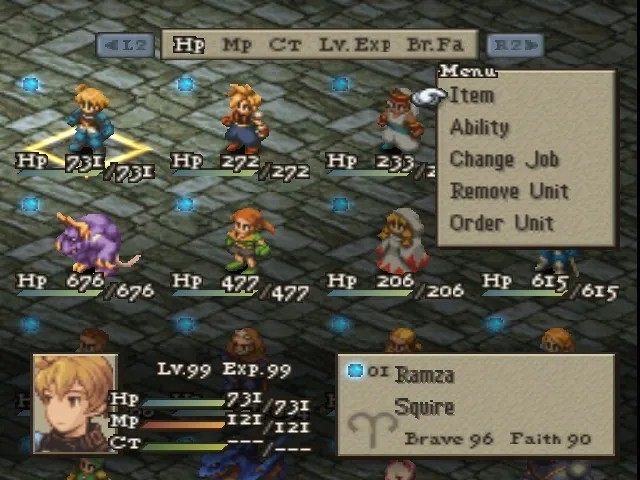Cart Before Horse Game Design

I will begin this article by stating my credentials as an absolute RPG addict. I've played every final fantasy, barring 11, and any of my friends can attest to me trying to get them to play a game only to find out it's from 1992 and requires about 30 hours to actually complete. I love all sorts of RPG sub genres, from JRPG(which man, we really need a new term for this style of RPG, likely Turn Based RPG), to CRPG, to WRPG(Again, western RPG? Really?)
All of my chest beating aside, there is one thing that I can never forgive a certain design philosophy; character creation before the game starts. So many games let the player have some amount of control over their avatar, my favorite being Earthbound's silly questions about their favorite food and coolest thing. In my opinion, asking the player questions about identity before playing the game makes the most sense. What drives you? What do you look like? What do you like eating? All of these flavorful questions are really good at giving the developers ammo for later to use against the player.
I recently finished up my second play through of Baldur's Gate 3, a game which is incredible on every single aspect of its design aside from character creation. In this massive, 50+ hour game, when you start up a new game you're delivered a beautiful cutscene before being shown a character creation screen. This screen is designed to take you through creating a character step by step, be it your own custom one or a prebuilt option. This is already confusing though, since there are two custom origins, "Tav" which is the default name of a generic adventurer, or The Dark Urge, which is a character nod to previous Baldur's Gate games. If you select one of the 6 companion characters, they are removed from the game and you act as that character, getting special interactions and endings based on their point of view.

Now, I'm not going to say that this is terrible. I played the game twice and mastered most of the classes, aside from Bard due to playing one in my D&D 5E campaign. But really I played the game three times, starting as the origin character Karlach before realizing that I wouldn't be able to interact with her as an NPC, and thus not really get to know the character. So then I went back to the drawing board and made a Tav Sorcerer. Being asked to make a major decision on how you interact with the game world before knowing anything about your allies or how the game plays is what I call "Cart before the Horse"(name pending) design.
This is a cardinal sin of the CRPG(Computer Role Playing Game) and WRPG(Western Role Playing Game) genres. In your average Fallout, Icewindale, or Baldur's gate, the player is told to create their character. In some of these games, the character creation process is blended with a tutorial where you interact with the environment, a step in the right direction. Most don't though, instead showing you a character on a pedestal and demanding that the player make decision after decision about honing the gameplay experience before they know what they're playing.
In my experience there are a few ways this ends up:
1) The player chooses one of the pre-built options. This leads to very little customization and feeling like the player has to trust the designer to unlock the fun for them
2) The player plays the game for an hour or two with some default options selected, and then goes back and starts over with a greater understanding of how to create a character (My experience with Karlach above)
3) The player looks up a guide for an optimal build
4) The player makes their own custom build, but makes it in a way they don't find fun or is not well crafted, and thus makes the game agonizing
5) The player gets stuck by decision paralysis on the first screen and never plays the game

Divinity: Original Sin is the first time I've been in that 5th category. Developed by Larian Studios, the same people who brought you 2023's Game of the Year Baldur's Gate 3, Divinity was released June 30, 2024, nearly a decade before BG3. After my second playthrough of BG3 I wanted to go back in time to a game that has been sitting in my backlog on steam to see where Larian started. Divinity is a CRPG and gives the players a vast array of options when it comes to character creation. It has just enough rope for the player to hang themselves with.
So, I'm going to start explaining why I didn't get past the character creation screen. First of all, you are tasked with creating not one, but TWO characters. In most RPGs there is a concept of the 4 man band (fighter, thief, healer, mage), but here you are given only 2 players and thus need to figure out what roles you need to fill before knowing how this game plays. I don't know if I'll be given extra party members throughout the game, what classes they'll be, or what is even useful in this game. Later, in the character appearance editing screen a pop up comes up asking you to choose how the AI will work, and suggests you don't use AI. This popup blocked the AI option for me, so I was trying to find out why this popped up, dismissed it, and only then understood what it was telling me now that the popup was gone.
After this, I decide that the game will likely give me a big beefy boy and a healer at some point(or I'll just use potions), thus I settle on a rogue of some sort and a mage. But now I want to review what I'm getting with these two, so I go into the stats menu and boy that was a mistake. You're given 6 main attributes which all have tooltips explaining what they're used for, as well as Abilities, Traits, and Skills. Every single option here has a full in game tooltip, explaining to you how many action points or how much damage it does, but you don't know how many action points and how much health you have. It was at this point where I decided to go and start researching the game, only to find most of the guides explaining only what the best options are, not why the other options aren't useful. They go on to explain, in great detail, what optimal builds are and concepts about crafting allies, but don't really help with learning the game in my experience with them.
I will simply state that at this point, I put down my steam deck and went to bed. I opened the game again the following day, stared at these options for fifteen minutes, and then put it down again. I will likely pivot to the second option listed above one day, but that day is not today. Now that I have have fully described the cart before horse design issue, let me explain how my favorite video game onboards players: Final Fantasy Tactics.

In FFT(Final Fantasy Tactics) your character creation is limited to your birth date and your name. The birth date is surprisingly important, but it mostly changes things behind the scenes. You are then thrust into the story, and are given control of a single character, the protagonist Butts(Or Ramza if you're going with the default.) After that, you're sent back in time to the days when your character was a squire, and given command over 5 characters at the same time now. You're not allowed to do any customization yet, you just place your given army units on the field, use them, and beat up some bandits. While playing you'll note that you gain JP and EXP while doing actions, and sometimes your characters level up or gain a Job Level, whatever that means. After clearing out the enemies you are shown the map screen, and only now do we have the option to change our characters in any way. Oh, hey, some of them gained a job level, which unlocks some new jobs! But when I change to that Knight, I notice that I can't use clothes, so I'm going to go back to Squire.
In this game, any modification is temporary or can be fixed, aside from a character fully dying or being removed from your army. The player is slowly given more and more options to choose from regarding job, equipment, abilities, just like in Divinity, only we're given these tools only after we understand what a normal portion of gameplay looks like. I will say that many of my friends I suggested this game to bounce off it due to the difficulty or the complexity later, but almost everyone at least fights in a battle or two. The game slowly gives you more power over the course of the experience, instead of forcing you to contend with every system before you understand it.
And thus, Cart before Horse design. CRPGs love giving their players total control, even if that control is basically handing a knife to a newbie in the kitchen and telling them to do their job. It is very difficult to design a complex game like Divinity or BG3 without such crunchy, expansive control over one's characters. Lets do a though experiment now in relation to Baldur's gate 3. What if, instead of clicking on the start game option and being asked to create a character sheet, we instead were given the ability to choose just how our character looked, their race, and were given a base starter class. Now, they do the opening act with this dummy class, this class that gives them a smattering of abilities to start to understand how the world works. Give them a +2 in every stat for all I care. Let the player interact with the game, and then after that intro sequence you wake up on the beach and are given the ability to create their character. This lets your player understand the controls, how the game plays, and make a decision based on their understanding of the systems that they have now used for a solid hour or so.
This is one of those topics in game design I feel don't get discussed enough. When I voiced my theory of "cart before horse" design to my friends they all agreed they have experienced that in games before, and would love to hear my thoughts on this aspect of design. The whole point of this article is to start a discussion! Game designers aren't perfect, and neither are their games. We should always strive to do our best, and I just want to state that the purpose in my criticism is never to make people feel bad, it is to bring the flaws to light so we can discuss ways to improve upon those flaws. No game is perfect, and discussing successes and failures are how we can work towards more fun in the future.